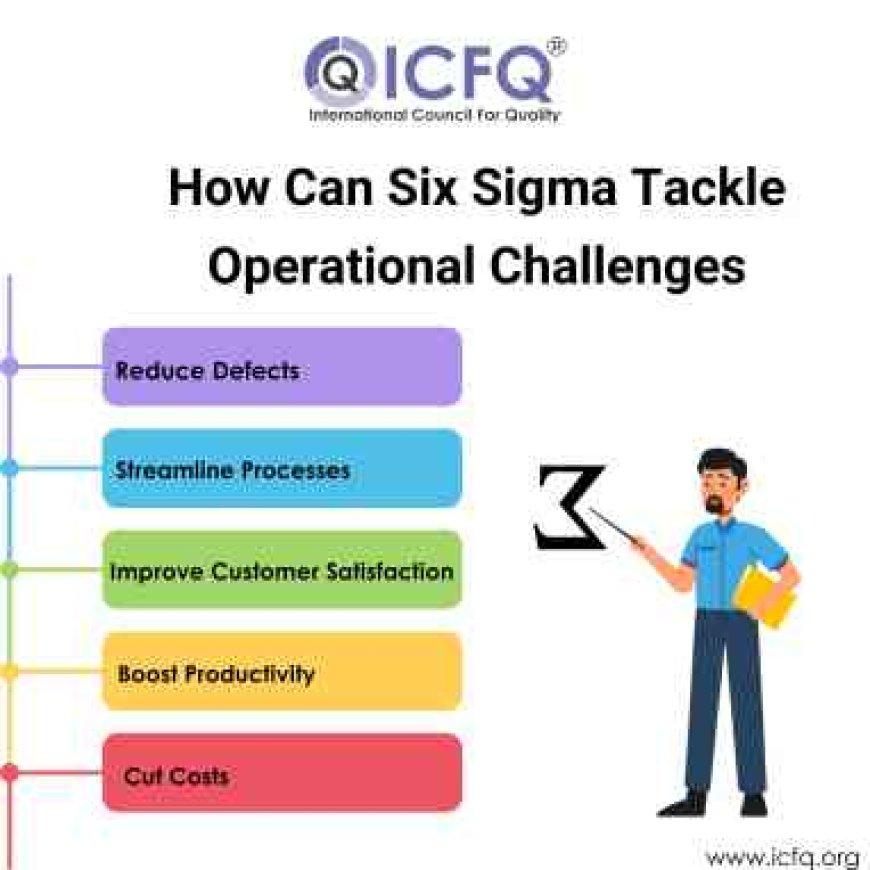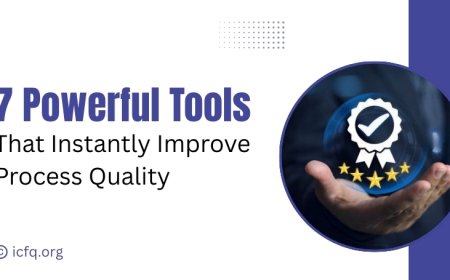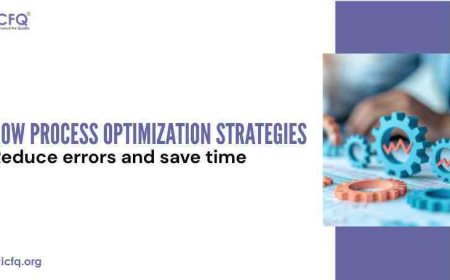Understanding Six Sigma Concept
Understanding the fundamentals of Six Sigma. Understand Six Sigma concepts, methodologies, and how they can enhance quality and efficiency in your business processes.

The Six Sigma concept is a valuable method for improving business processes by reducing errors and inconsistencies. Taking Six Sigma courses and getting Six Sigma certification can greatly boost your skills and your company's efficiency. From Lean Six Sigma courses to various Six Sigma online courses, there are many ways for professionals to learn this method. There are different levels of Six Sigma certification, including Six Sigma Yellow Belt, Six Sigma Green Belt, Six Sigma Black Belt, and the advanced Six Sigma Master Black Belt. Each level offers different depths of knowledge and expertise. For those seeking the highest level of expertise, the Six Sigma Master Black Belt provides an advanced grasp and application of Six Sigma principles. Earning a Six Sigma Lean Certification or Six Sigma Professional Certification shows a strong commitment to quality and process improvement.
Increasing Need for Process Optimization in Business
Companies are always looking for ways to enhance their operations, cut waste, and boost profits. This focus on operational excellence has led many to explore Six Sigma methodologies. Six Sigma Courses, including Six Sigma Certification, Lean Six Sigma Courses, and Six Sigma Online Courses, offer valuable knowledge and skills to help streamline processes and improve quality. Professionals who want to make a big difference in their organizations are pursuing certifications like Six Sigma Green Belt, Six Sigma Black Belt, and Six Sigma Yellow Belt. These certifications prove their expertise in Six Sigma principles and practices, enabling them to drive significant improvements within their companies. For those aiming for the highest level of Six Sigma expertise, the Six Sigma Master Black Belt provides advanced training and leadership skills.
Businesses are increasingly seeing the benefits of Six Sigma Lean Certification and Six Sigma Professional Certification as ways to achieve steady growth and gain a competitive edge. By investing in these courses, companies can ensure they have the right tools and strategies to succeed in today’s competitive market. The Six Sigma Concept helps organizations implement effective solutions to meet their goals and thrive.

The Role of the Six Sigma Concept
Maintaining consistent quality is vital but often tough for businesses. Here are some common challenges:
-
Process Variation: Small differences in how things are done can affect quality.
-
Lack of Standardization: Different teams or locations might use different methods.
-
Limited Resources: Not having enough resources can make it hard to maintain quality.
-
Implementation Challenges: Setting up quality standards like the Six Sigma Concept takes time and effort.
-
Resistance to Change: Employees might be reluctant to adopt new quality control practices.
What is Six Sigma and How Can It Help?
1. What is Six Sigma?
Six Sigma is a set of methods used to improve business processes by finding and fixing problems and inconsistencies. It uses data and statistical analysis to make processes nearly flawless, aiming for top-quality results. This approach helps businesses enhance their operations and achieve better results.
2. How Can Six Sigma Help Your Business?
-
Improves Quality: Six Sigma helps reduce defects and variations, ensuring your products and services meet high-quality standards.
-
Increases Efficiency: By making processes smoother, Six Sigma speeds up production and cuts down on waste, saving you money.
-
Boosts Customer Satisfaction: Consistent, high-quality products or services build customer trust and loyalty.
-
Enhances Employee Engagement: Involving employees in Six Sigma projects helps them contribute to improvements, creating a culture of continuous progress.
-
Improves Financial Performance: Better efficiency and quality lead to cost savings and higher profits.
Implementing Six Sigma for Better Business Performance
Six Sigma focuses on improving processes, reducing errors, and boosting efficiency. This blog will explain how to implement Six Sigma to enhance business performance.
1. Understand the Six Sigma Concept
-
Six Sigma is a datadriven approach to removing defects from processes.
-
It aims for nearly perfect results, with only 3.4 defects per million opportunities.
-
Grasping this concept is the first step towards successful implementation.
2. Identify Key Business Processes
-
Find the processes that significantly impact your business performance.
-
Focus on those processes that are crucial for customer satisfaction and efficiency.
3. Train Your Team
-
Offer Six Sigma training to your employees.
-
Make sure your team understands Six Sigma principles and tools.
-
Encourage certifications like Yellow Belt, Green Belt, and Black Belt to build expertise.
4. Use the DMAIC Methodology
-
Define: Identify the problem and set goals.
-
Measure: Collect data to understand current performance.
-
Analyze: Find the root causes of defects.
-
Improve: Implement solutions to fix the issues.
-
Control: Ensure that improvements are maintained and performance is consistent.
5. Utilize Data and Analytics
-
Use data and analysis to find areas for improvement.
-
Implement software tools to help with data collection and analysis.
-
Regularly review performance metrics to track progress.
6. Promote a Culture of Continuous Improvement
-
Encourage ongoing improvement among employees.
-
Recognize and reward efforts that lead to better processes.
-
Create a work environment where feedback and suggestions are valued.
7. Engage Leadership
-
Gain commitment and support from top management.
-
Make sure leaders understand the benefits of Six Sigma and are involved.
-
Leaders should drive Six Sigma initiatives and provide necessary resources.
8. Align Six Sigma with Business Strategy
-
Ensure Six Sigma projects match your business goals and objectives.
-
Use Six Sigma to support strategic initiatives and boost your competitive edge.
-
Make sure Six Sigma efforts contribute to longterm business success.
9. Monitor and Maintain Improvements
-
Regularly check the performance of implemented changes.
-
Use tools like control charts to ensure improvements are maintained.
-
Continuously look for new opportunities to apply Six Sigma.
Implementing the Six Sigma concept can greatly enhance business performance by improving processes, reducing errors, and increasing efficiency. By understanding Six Sigma principles, training your team, using the DMAIC method, utilizing data, fostering a culture of continuous improvement, engaging leadership, aligning Six Sigma with business strategy, and monitoring improvements, businesses can achieve higher performance levels. For more guidance on implementing Six Sigma, visit the icfq site.





























